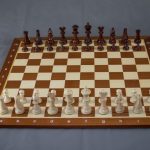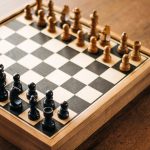Download links
How to install Mastering the Art of Basketball: Tips for Success APK?
1. Tap the downloaded Mastering the Art of Basketball: Tips for Success APK file.
2. Touch install.
3. Follow the steps on the screen.
Description
Basketball is a dynamic sport that combines physical prowess with strategic thinking. At its core, the game is played between two teams, each aiming to score points by shooting a ball through the opposing team’s hoop. The fundamental rules are straightforward: each team consists of five players, and the game is played on a rectangular court divided into two main sections.
The game begins with a jump ball at center court, and from there, teams alternate possession based on various rules, including fouls and violations. Understanding the basic structure of basketball also involves familiarizing oneself with key terminology.
Terms such as dribbling, shooting, passing, and rebounding are essential for grasping how the game is played. Dribbling refers to the act of bouncing the ball while moving, which is crucial for advancing the ball down the court. Shooting involves attempting to score by throwing the ball into the basket, while passing is the method of transferring the ball between teammates.
Rebounding is the act of retrieving the ball after a missed shot. Each of these elements plays a vital role in both offensive and defensive strategies, making them foundational to any player’s development in the sport.
Key Takeaways
- Understanding the basics of basketball is crucial for beginners, including the rules, positions, and fundamental techniques.
- Developing essential skills such as dribbling, shooting, and passing is key to becoming a well-rounded player.
- Mastering defensive and offensive strategies is essential for success on the court, including understanding plays and positioning.
- Building a winning mindset through mental toughness and focus is crucial for overcoming challenges and setbacks in the game.
- Enhancing performance through physical conditioning and training is important for improving endurance, strength, and agility on the court.
Developing Essential Skills: Dribbling, Shooting, and Passing
To excel in basketball, players must hone their fundamental skills: dribbling, shooting, and passing. Dribbling is not merely about bouncing the ball; it requires control, agility, and awareness of one’s surroundings. Effective dribbling allows players to navigate through defenders and create scoring opportunities.
Techniques such as crossover dribbles, behind-the-back moves, and hesitation dribbles can be employed to outmaneuver opponents. For instance, a player might use a crossover dribble to shift their body weight quickly from one side to another, creating space to drive toward the basket or set up for a shot. Shooting is another critical skill that demands precision and practice.
A successful shot involves proper technique, including foot placement, hand positioning, and follow-through. Players often practice various shooting drills to improve their accuracy from different spots on the court. For example, the “spot shooting” drill involves taking shots from designated spots around the three-point line to build muscle memory and confidence.
Additionally, free throw shooting is an essential aspect of scoring that requires mental focus and consistency. Players often practice free throws under pressure to simulate game conditions, reinforcing their ability to perform when it matters most. Passing is equally important in basketball as it facilitates teamwork and ball movement.
A well-timed pass can break down defenses and create open shot opportunities. Players must learn different types of passes—such as chest passes, bounce passes, and overhead passes—each serving specific purposes depending on the situation. For instance, a bounce pass may be more effective when a defender is closely guarding a teammate, as it can evade interception while still reaching its target.
Mastering these passing techniques enhances a player’s ability to contribute to their team’s offensive flow.
Strategies for Defense and Offense: Mastering the Game

Basketball is as much about strategy as it is about individual skills. On offense, teams must develop plays that maximize their scoring potential while minimizing turnovers. Common offensive strategies include pick-and-roll plays, isolation sets, and fast breaks.
The pick-and-roll involves one player setting a screen for a teammate handling the ball, allowing them to either drive toward the basket or take an open shot. This strategy can create mismatches against defenders and open up scoring opportunities. Defensively, teams must focus on preventing their opponents from scoring while also creating turnovers.
Strategies such as man-to-man defense and zone defense are fundamental to effective defensive play. In man-to-man defense, each player is responsible for guarding a specific opponent, requiring strong individual defensive skills and communication among teammates. Conversely, zone defense involves players covering specific areas of the court rather than individual opponents, which can be effective against teams that rely heavily on outside shooting.
Understanding when to employ these strategies can significantly impact a team’s success during games. Moreover, situational awareness plays a crucial role in both offensive and defensive strategies. Players must be able to read the game as it unfolds—recognizing when to push for a fast break or when to slow down and set up a play.
This adaptability requires not only skill but also an understanding of the opponent’s tendencies and weaknesses. Coaches often emphasize film study as part of practice routines to help players analyze their own performances as well as those of their opponents.
Mental Toughness and Focus: Building a Winning Mindset
| Metrics | Results |
|---|---|
| Self-discipline | 8 out of 10 |
| Resilience | 9 out of 10 |
| Focus | 7 out of 10 |
| Confidence | 8 out of 10 |
Mental toughness is an often-overlooked aspect of basketball that can significantly influence performance on the court. Players face numerous challenges during games—pressure situations, tough opponents, and even personal doubts can all affect their ability to perform at their best. Developing mental resilience involves cultivating a strong mindset that allows players to stay focused and composed under pressure.
Techniques such as visualization can be beneficial; players often visualize successful plays or shots before executing them in real-time. Focus is equally important in maintaining peak performance throughout a game. Distractions can come from various sources—crowd noise, opposing players’ taunts, or even internal self-doubt.
Players must learn to block out these distractions and concentrate on their roles within the team framework. Mindfulness practices have gained popularity among athletes as a way to enhance focus; these practices encourage players to remain present in the moment rather than dwelling on past mistakes or worrying about future outcomes. Additionally, fostering a positive self-talk routine can help players maintain confidence during challenging moments.
Encouraging oneself with affirmations or reminders of past successes can bolster confidence when facing adversity on the court. Coaches often play a pivotal role in helping players develop this mental toughness by providing constructive feedback and fostering an environment where mistakes are viewed as opportunities for growth rather than failures.
Physical Conditioning and Training: Enhancing Performance
Physical conditioning is paramount in basketball due to the sport’s demanding nature. Players require strength, speed, agility, and endurance to compete effectively at high levels. A well-rounded conditioning program typically includes cardiovascular training, strength training, flexibility exercises, and agility drills.
For instance, sprinting drills can enhance cardiovascular fitness while also improving speed on fast breaks or defensive recoveries. Strength training is particularly important for basketball players as it helps build muscle mass and power necessary for explosive movements such as jumping and sprinting. Exercises like squats, lunges, and deadlifts are commonly incorporated into training regimens to develop lower body strength essential for rebounding and shooting.
Upper body strength is equally important for shooting accuracy and defensive capabilities; exercises like bench presses and pull-ups can enhance overall upper body power. Agility drills are designed to improve quickness and coordination—skills that are vital for both offensive maneuvers and defensive positioning. Ladder drills or cone drills can help players develop footwork that allows them to change direction rapidly while maintaining balance.
Flexibility training through stretching routines or yoga can also aid in injury prevention by ensuring that muscles remain supple and responsive during intense gameplay.
Teamwork and Communication: Keys to Success on the Court

Basketball is inherently a team sport that relies heavily on effective communication and collaboration among players. Successful teams understand that individual talent must be complemented by cohesive teamwork to achieve victory. Communication on the court encompasses verbal cues—such as calling out plays or alerting teammates of defensive switches—as well as non-verbal signals like eye contact or hand gestures that indicate intent without disrupting gameplay.
Building strong relationships among teammates fosters trust and understanding during games. Teams often engage in bonding activities outside of practice to strengthen these connections; whether through team dinners or group outings, these experiences help players develop chemistry that translates into better on-court performance. When players trust one another’s abilities and decisions during games, they are more likely to make quick decisions that benefit the team as a whole.
Moreover, effective teamwork extends beyond just passing the ball; it involves recognizing each player’s strengths and weaknesses and utilizing them strategically during games. Coaches often emphasize roles within the team—designating specific players as primary scorers or defensive specialists—to ensure that everyone understands their contributions toward achieving collective goals. This clarity allows players to focus on executing their roles without hesitation.
Learning from the Pros: Studying and Emulating the Best
One of the most effective ways for aspiring basketball players to improve their skills is by studying professional athletes who have excelled in the sport.
Players often analyze game footage of their favorite professionals—observing how they handle pressure situations or execute complex plays.
In addition to watching games, aspiring players can benefit from attending camps or clinics led by former professional athletes or experienced coaches who share their knowledge of the game. These events often provide hands-on training opportunities where participants can learn specific skills directly from those who have succeeded at elite levels. For example, many NBA players host summer camps where young athletes can receive personalized instruction while also gaining inspiration from their idols.
Furthermore, reading books or articles written by professional players or coaches can offer deeper insights into the mental aspects of basketball—such as leadership qualities or overcoming adversity—that are crucial for long-term success in sports. Many successful athletes share their journeys through autobiographies or motivational literature that not only detail their achievements but also highlight challenges they faced along the way.
Overcoming Challenges and Setbacks: Resilience in the Game
Every athlete encounters challenges throughout their careers—whether it be injuries, losses in critical games, or periods of poor performance. Resilience becomes an essential trait for basketball players who aspire to reach their full potential despite these setbacks. Learning how to cope with adversity involves developing coping mechanisms that allow athletes to bounce back stronger than before.
Injuries are particularly common in basketball due to its high-impact nature; however, how players respond to these setbacks can define their careers. Many professional athletes have shared stories of overcoming significant injuries through rigorous rehabilitation programs combined with mental fortitude—using these experiences as motivation rather than allowing them to derail their ambitions. Moreover, dealing with losses requires a similar mindset shift; instead of viewing defeat as failure, successful athletes often analyze what went wrong during games—identifying areas for improvement while maintaining confidence in their abilities moving forward.
Coaches play an integral role in guiding players through these tough times by providing constructive feedback while emphasizing growth rather than dwelling on mistakes. Ultimately, resilience in basketball extends beyond individual experiences; it encompasses how teams respond collectively after facing challenges together—whether it be rallying after a tough loss or supporting one another through injuries—creating an environment where perseverance becomes ingrained within team culture.
FAQs
What is basketball?
Basketball is a team sport in which two teams, typically consisting of five players each, compete to score points by shooting a ball through the opposing team’s hoop.
What are the basic rules of basketball?
The basic rules of basketball include dribbling the ball while moving, shooting the ball into the opposing team’s hoop, and playing defense to prevent the opposing team from scoring.
What equipment is used in basketball?
The main equipment used in basketball includes a ball, hoop, and court. Players also wear specialized basketball shoes and may use protective gear such as knee pads and ankle braces.
How is basketball played?
Basketball is played on a rectangular court with a hoop at each end. Players move the ball by dribbling or passing to teammates, and score points by shooting the ball through the opposing team’s hoop.
What are the health benefits of playing basketball?
Playing basketball can improve cardiovascular health, build endurance, and enhance coordination and balance. It also provides a full-body workout and can help with weight management.
What are the different positions in basketball?
Common positions in basketball include point guard, shooting guard, small forward, power forward, and center. Each position has specific roles and responsibilities on the court.
What are some famous basketball leagues and tournaments?
Some famous basketball leagues and tournaments include the National Basketball Association (NBA) in the United States, EuroLeague in Europe, and the FIBA Basketball World Cup.





